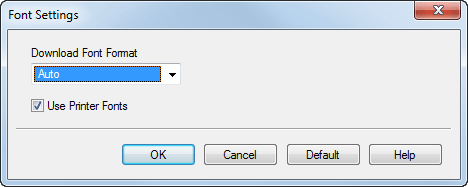
Specifying the image quality
- Fine-tuning the image quality according to the original (Quality Adjustment)
- Selecting the optimum image quality for the original (Original Type)
- Specifying the graphic pattern density (Pattern) (PCL/XPS only)
- Specifying the compression ratio of graphic images (Image Compression) (PCL only)
- Saving toner (Toner Save)
- Sharpening the border between text etc. (Edge Enhancement)
- Specifying font processing (Font Settings) (PCL/PS only)
- Preventing failure in printing thin lines (Thin Line Support) (PCL only)
Fine-tuning the image quality according to the original ([Quality Adjustment])
You can fine tune the image quality according to the original.
You can adjust the overall image quality of the original, and you can also adjust in detail the image quality of each element of the original, such as text and photos. When you are using the PCL driver, you can adjust the brightness and contrast.

In the [Quality] tab, click [Quality Adjustment].
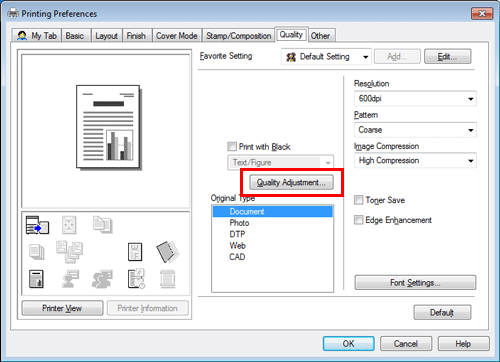
Fine tune the image quality according to the original.
[Simple]: The image quality of the entire original is adjusted.
[Detail]: The image quality of the original is adjusted in detail for each element such as text, photos, figures, tables, and graphs.
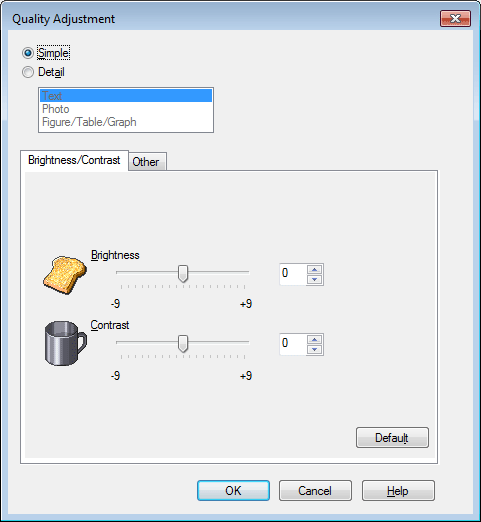
Click [OK].
[Quality Adjustment] is available only when the printer driver for Windows is used.
Selecting the optimum image quality for the original ([Original Type])
Select the optimum settings for the original to print it at the optimum image quality level.
Select one of the following processes according to the original to be printed; the process suitable for originals consisting primarily of text, the process suitable for photos, the process suitable for originals created with DTP, the process suitable for printing Web pages, or the process suitable for printing CAD data.

In [Original Type] in the [Quality] tab, select the optimum image quality mode for the original.

Specifying the graphic pattern density ([Pattern]) (PCL/XPS only)
In [Pattern] in the [Quality] tab, select the graphic pattern density.
[Pattern] is available only when the printer driver for Windows (PCL/XPS) is used.
Specifying the compression ratio of graphic images ([Image Compression]) (PCL only)
In [Image Compression] in the [Quality] tab, select whether the quality or printing speed is preferred when the image data contained in the original is compressed.
[Image Compression] is available only when the printer driver for Windows (PCL) is used.
Saving toner ([Toner Save])
Selecting the [Toner Save] check box in the [Quality] tab adjusts the printing density in order to save the amount of toner consumed.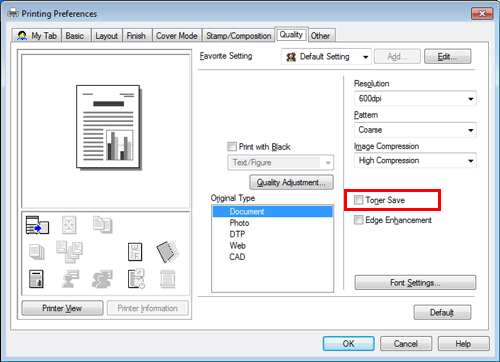
Sharpening the border between text etc. ([Edge Enhancement])
Sharpen the edges of images such as text in the table and graphics to improve legibility.
In the [Quality] tab, select the [Edge Enhancement] check box.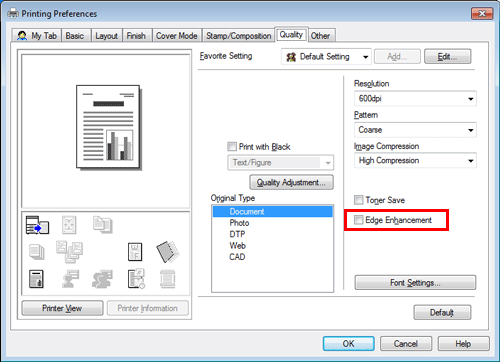
Specifying font processing ([Font Settings]) (PCL/PS only)
Specify how the fonts are processed for printing.
In the [Quality] tab, click [Font Settings].
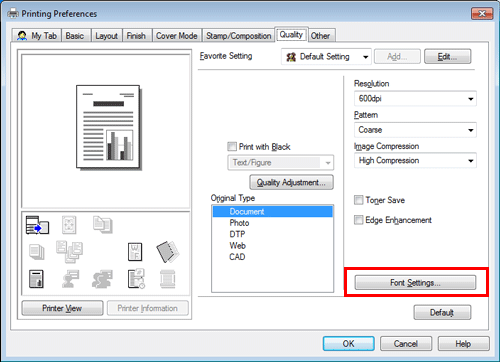
Change how the fonts are processed for printing.
PCL driver
PS driver
Settings
Description
[Download Font Format]
Select a type of fonts to be downloaded from the PC to this machine.
[Use Printer Fonts]
Select this check box to replace TrueType fonts with printer fonts during printing. Use of printer fonts increases the printing speed.
In normal printing operations, we recommend that you select this check box.
[TrueType Font Substitution Table] (PCL only)
Set this table when you want to specify the printer fonts that replace TrueType fonts.
From the list, select the TrueType font, then in [Printer Font to Use], select the printer font with which you want to replace the TrueType font.
Click [OK].
If characters are garbled in an environment using the PCL driver, we recommend that you select [Bitmap] in [Download Font Format] and clear the [Use Printer Fonts] check box.
[Font Settings] is available only when the printer driver for Windows (PCL/XPS) is used.
Preventing failure in printing thin lines ([Thin Line Support]) (PCL only)
Select this option to prevent thin lines from disappearing in reduced-size printing.
On the [Other] tab, select the [Thin Line Support] check box.
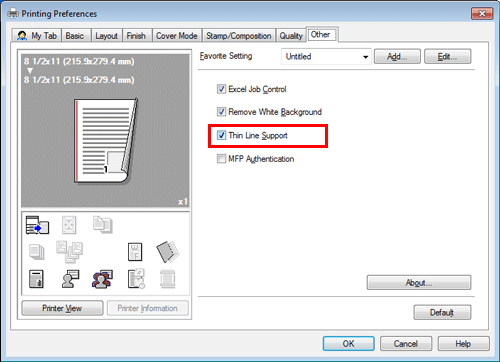
This is effective for thin lines such as table borders created in Excel, but not for thin lines used in illustrations.
[Thin Line Support] is only available when the printer driver for Windows (PCL) is used.


